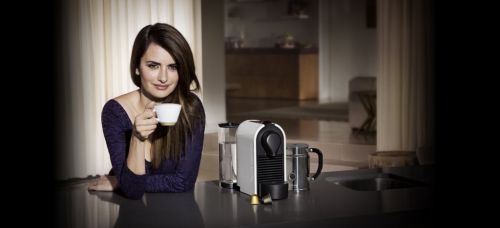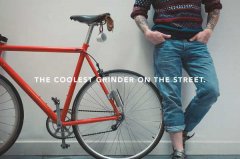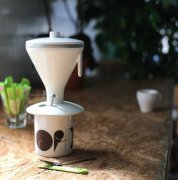Nespresso and Keuring: Apple and Microsoft in the coffee world

If you want to describe Nespresso and Keuring coffee companies in the style of a technology company, it must be Apple and Microsoft. At first glance, Nespresso's coffee machine looks similar to Jony Ive's design.
Nespresso's coffee maker has the elegant shell of a Google chrome laptop and Apple's rounded corner logo. Easy to use, it only takes 15 seconds to make a delicious cup of coffee so easy. Nespresso's physical store also gives people the feeling of Apple experience store, not only the coffee capsule but also the coffee machine, all emphasize to give the user the exclusive experience atmosphere. Nespresso's coffee ad also highlights the unique user experience of its products, starring stars, including famous actors Penelope Cruz,Matt Damon and George Clooney (endorsements up to $3 million).
To sum up Nespresso: high-quality production, easy to use, elegant appearance, shrewd marketing strategy, low price-in short, the apple of the coffee world is the most appropriate description.
Keurig, as the main competitor of Nespresso for a long time, adopts the strategy of blooming everywhere. The company, based in Reading, Massachusetts, also sells household coffee makers that make coffee capsules. It has established technical cooperation with a number of coffee manufacturers (such as Mr.Coffee,Black & Decker, etc.), while a number of coffee manufacturers (including Dunkin' Donuts, Starbucks, Green Mountain Coffee, etc.) produce multi-flavor coffee capsules.
Although individuals prefer Nespresso coffee (machine), but personal tastes are different, there are still a lot of people who like Keurig. An article two years ago mentioned that Keurig coffee machines account for about 13% of workplace coffee makers in the United States, which should now be even higher. Although their coffee machine looks a bit corny (like the Dell in the 1990s and Apple today), the machine is cheaper and the price of coffee capsules is about the same.
Well, maybe "Microsoft" would be a better metaphor. The competition between Nespresso and Keurig is like the competition between Apple and Microsoft in the 1980s and 1990s. The Apple empire cultivated by Steve Jobs has built unusual computers and attracted the support of a large number of fruit fans, while Microsoft does not sell its own machines, but installs its own system on almost every machine, whenever other machines are sold. I can get a share of the profits.
Both Nespresso and Apple represent high-end brands in the industry, put more emphasis on customer experience, and are (at the time) more expensive than machines running Dos and Microsoft. Jobs was forced to leave Apple in the early 1980s, leaving Apple in a product shortage, while Microsoft took the opportunity to become one of the richest companies in the world.
But fortunately, Jobs came back and Apple had the last laugh. Apple has re-established users' high trust in it, launching product innovation, from the iPod to the multi-touch iPhone and iPad, with a halo of technology and personality cult. When Jobs returned to Apple in 1996, Apple's market capitalization climbed from $3.1 billion to $555 billion today-almost twice as much as Microsoft.
Although Nespresso and Keurig have many business models to choose from, the relationship between the two is now similar to that between Apple and Microsoft. But in terms of the market, there is still a big difference between selling coffee and electronic technology.
The first is what Nespresso and Keuring have discovered: coffee capsules are a cheap and expensive product-which sounds paradoxical, but can be logically explained: each regular coffee capsule costs only 70 cents, and some (such as Nespresso's selection of Hawaiian Kona coffee) are more expensive at $2 each. But a capsule is always cheap for both Nespresso and Keurig,70 cents.
But if you sell coffee alone, the price is often as high as $50 per pound, and some high-end coffee (such as Jamaican Blue Mountain Coffee) costs as much as $60, which is much higher than coffee capsules. The utilization rate of brewing coffee with coffee beans is much lower than that of capsules. The iron capsule packaging of coffee capsules is also very convenient to handle.
In fact, coffee producers do not have to worry about the purchasing power of consumers. Compared with these coffees, Starbucks can sell a caramel cappuccino for $5. Although Dunkin' Donuts and other coffee makers have launched low-priced coffee, Starbucks still firmly dominates the high-priced market. Here are some real figures: roasted coffee beans per pound = 25 cups of Italian espresso = 50 cups of Starbucks regular coffee. Starbucks coffee (average price) 30 yuan per RMB, each pound of coffee can make 50 cups, a total of 1500 yuan. If you sell carbon-roasted coffee powder (Starbucks, bagged), it costs about 200 yuan per pound, which is much lower than the price of the finished product-which means coffee is a "cheap and expensive" product.
Important Notice :
前街咖啡 FrontStreet Coffee has moved to new addredd:
FrontStreet Coffee Address: 315,Donghua East Road,GuangZhou
Tel:020 38364473
- Prev

The bean grinder installed on the bicycle by Gear Grinder is specially used for flying.
The creativity of two Englishmen, Dan Hill and Dave Buonaguidi, can be installed on Dead Flying's bean grinder Gear Grinder. Official website: http://www.geargrinder.co.uk
- Next

The Immerset coffee maker is similar to the smart cup Clever Cup
Immerset is very similar to the Clever cup designed and produced by Taiwan's EK Intl company, except for the structure at the bottom. At the bottom of the Clever Cup is a vertical piston rod. When it is picked up, the piston rod falls naturally under the force of gravity, and the silica gel on the rod blocks the dripping filter orifice. When the Clever Cup is placed on the cup, the piston rod is pushed up on the cup mouth, and the silicone gel is also removed from the
Related
- What is the Philharmonic pressure? How to use Philharmonic pressure to make delicious coffee
- Why does a hand grinder have more fine powder than an electric grinder?
- In addition to the hot mom, what is the difference between the versions of EK43 | ditting and Mahdi ek43?
- What kind of equipment do you need to make coffee by hand? Introduction to novice starter cooking equipment tools
- Espresso needs to be ground how thick and thin scale entry Italian Coffee Machine Bean Grinder investigation and Grinding course
- How much does it cost to open a small private cafe? How much does it cost to learn coffee? How to operate it?
- The difference between the flavor characteristics of hand-brewed coffee and coffee maker is hand-brewed coffee really better than coffee maker? Can I use a coffee machine to make coffee beans by hand?
- The difference between 01 and 02 of hario v60 filter cup what is the difference between 01 and 02 filter cup opening and cooking flavor
- What's the difference between the smart cup and the French kettle? Which is better, the French kettle or the Smart Cup?
- What's the difference between a smart cup and a V60 filter cup? The difference between the taste of smart cup and hand-brewed coffee

